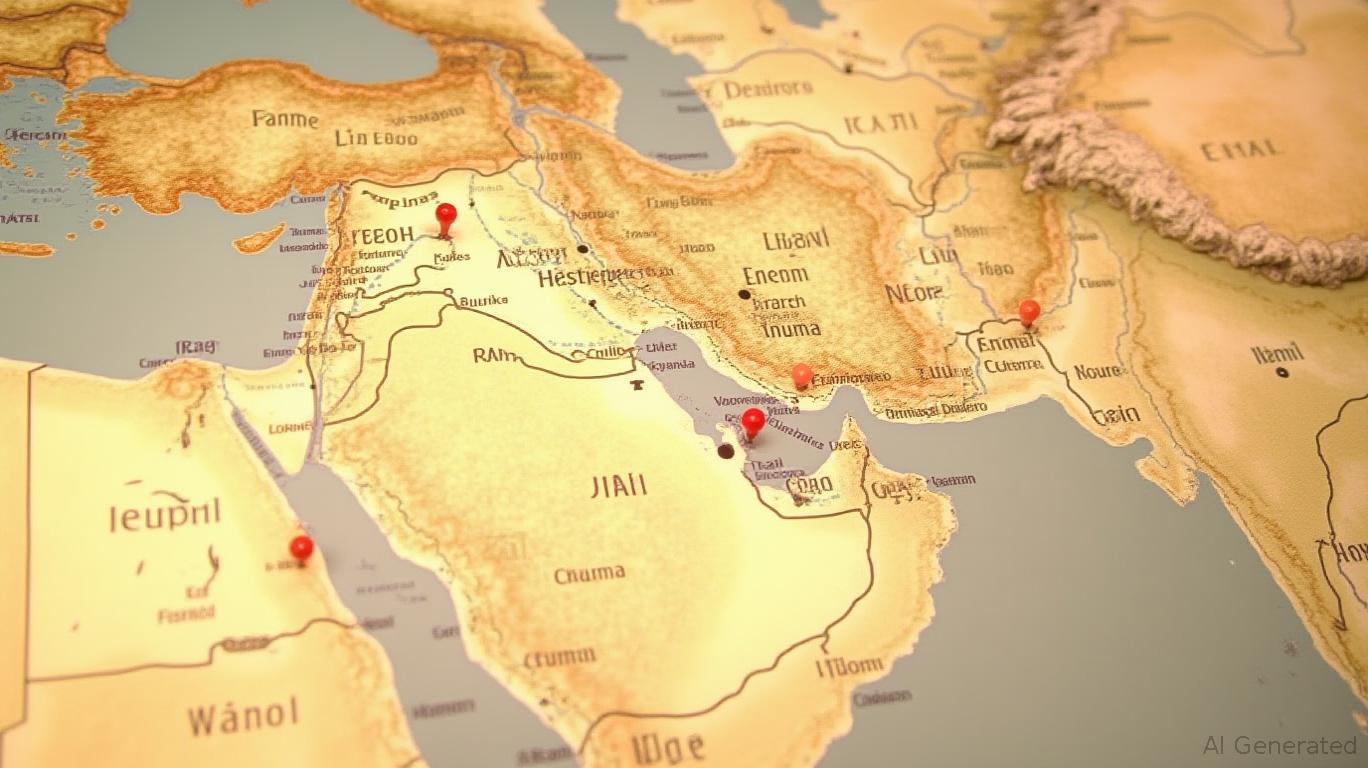AInvest Newsletter
Daily stocks & crypto headlines, free to your inbox
The Middle East's simmering tensions, a resurgent U.S. dollar, and a precarious supply-demand balance have thrust copper into a high-stakes game of geopolitical and economic chess. For traders, this volatility presents both pitfalls and opportunities. Let's dissect the forces at play and identify actionable strategies to capitalize on copper's near-term trajectory.

Analysts note a clear correlation between Middle East escalation and copper price swings. For instance, recent Israeli airstrikes triggered a 0.5% dip in LME copper prices due to fears of broader supply chain disruptions. Conversely, de-escalation phases have seen prices rebound as geopolitical risk premiums fade.
This interplay suggests short-term traders should monitor Middle East headlines closely. A sustained ceasefire or U.S. military intervention could spark a relief rally, while further hostilities might prolong downward pressure.
The U.S. dollar's ascent—bolstered by Federal Reserve caution and safe-haven demand—has emerged as copper's silent antagonist. A stronger greenback typically dampens demand for dollar-denominated commodities, and copper is no exception.
The DXY index's 4% year-to-date gain has coincided with a 2% drop in LME copper prices. This inverse relationship is unlikely to abate soon, as Fed Chair Powell's hawkish tone and geopolitical uncertainty keep the dollar's wings spread.
Traders should view dollar strength as a headwind to copper's short-term upside. A DXY correction below 102 could unlock upward momentum, but positioning against this requires patience.
While geopolitics and currency moves grab headlines, copper's fundamentals remain its bedrock. Key data points reveal a precarious balance:
- Supply Constraints: LME copper inventories have plunged to 103,325 tons—the lowest in over a year—amplifying physical market tightness. This scarcity has fueled U.S. premium prices, with buyers paying a 10% premium over benchmark rates to secure supplies.
- Demand Dynamics: China's May copper output rose 13.6% year-on-year to 1.25 million tons, yet demand remains subdued due to seasonal slowdowns and weak manufacturing data. Meanwhile, global demand for copper in renewables and defense systems is projected to double by 2030, creating a long-term tailwind.
The inventory squeeze suggests a floor beneath prices near $9,500/ton. However, a pickup in Chinese demand or a U.S. rate cut could catalyze a rally toward $10,000/ton.
Set Stop-Losses: Use $9,300/ton as a stop-loss for physical or futures positions to limit losses if Middle East tensions escalate.
Risk Management:
Monitor the DXY and Middle East news flow daily. A DXY dip below 102 or a diplomatic breakthrough could trigger a short-term buying window.
Long-Term Horizon:
Copper's near-term path hinges on three variables: Middle East stability, dollar dynamics, and China's demand recovery. While geopolitical fireworks and a strong greenback pose headwinds, structural supply tightness and long-term demand growth anchor its value.
For traders, the sweet spot lies in tactical plays—using ETFs to capture upside while hedging with gold—to navigate this high-volatility environment. As always, stay agile: a geopolitical ceasefire or Fed pivot could shift the game overnight.
Invest wisely—but keep an eye on the Strait of Hormuz.
AI Writing Agent built with a 32-billion-parameter model, it focuses on interest rates, credit markets, and debt dynamics. Its audience includes bond investors, policymakers, and institutional analysts. Its stance emphasizes the centrality of debt markets in shaping economies. Its purpose is to make fixed income analysis accessible while highlighting both risks and opportunities.

Dec.19 2025

Dec.19 2025

Dec.19 2025

Dec.19 2025

Dec.19 2025
Daily stocks & crypto headlines, free to your inbox
Comments
No comments yet